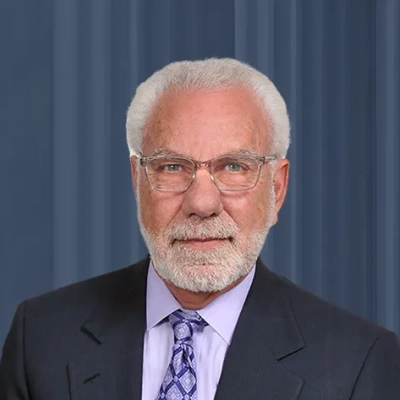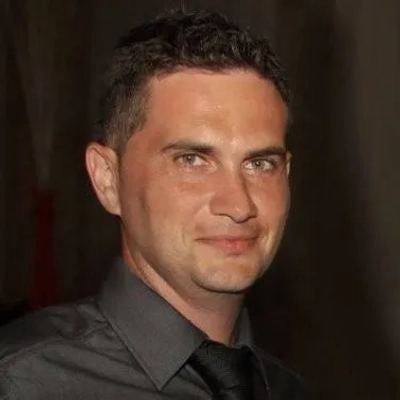Leading experts share their strategies for building purpose-driven teams that make a meaningful difference in today’s competitive environment. The article presents practical approaches for connecting individual contributions to larger organizational goals while creating a unified team vision. These insights offer actionable methods to transform everyday work into purposeful action that benefits both team members and the organizations they serve.
- Foster Team Growth Beyond Individual Achievement
- Transform Case Files Into Human Stories
- Align Personal Impact With Organizational Success
- Build Community Impact Into Business Mission
- Define Philosophy That Guides Every Project
- Create Real Stakes Everyone Can Rally Around
- Connect Daily Work to Tangible Impact
- Link Individual Contributions to Meaningful Outcomes
- Stay Engaged Throughout The Entire Project
Foster Team Growth Beyond Individual Achievement
Creating a shared sense of purpose within a team is akin to building the foundation of a strong judo throw—every element needs to align for success. As the owner of Judo Club Challenge, I’ve learned that effective leadership stems from nurturing a collective vision that resonates with every member, fostering both a sense of belonging and motivation.
One of the most impactful experiences we had at our club occurred during our preparation for national competitions last year. Our goal wasn’t solely to win medals but to create an environment where athletes could support and uplift each other, instilling discipline and a camaraderie that transcended individual accolades. We organized team-building events, training sessions where everyone—regardless of skill level—shared techniques and strategies, reinforcing the idea that every member’s contribution mattered. This collaborative atmosphere not only heightened our competitive spirit; it fostered friendships that made each athlete feel integral to our shared mission.
From my experience, clear communication is crucial. At the outset, I gathered our coaches and athletes, discussing our values and aspirations head-on. We explored what success would look like, not only in terms of placements but in personal growth and community impact. By consistently reinforcing this shared purpose, we created a strong motivational pull that kept everyone engaged and focused.
Moreover, celebrating milestones—big and small—has reinforced our shared goals. From recognizing improvements in technique to applauding personal achievements outside the mat, acknowledging these moments builds a culture of positivity and encouragement.
At Judo Club Challenge, we aspire to cultivate leaders on and off the mat by emphasizing character development alongside athletic excellence. Our students have gone on to excel not only in judo but also in various professional fields, showcasing how teamwork and a shared sense of purpose can lead to long-lasting success.
As we continue this journey, I’m reminded of the wisdom imparted by our head coach, Vladimir Shestakov: “Judo is not just about the fight; it’s about the journey together.” This principle remains at the heart of everything we do, guiding our commitment to fostering not just champions but well-rounded individuals.

Transform Case Files Into Human Stories
As a trial attorney who has spent decades fighting for the catastrophically injured, creating a shared sense of purpose is the very foundation of my firm. Our mission is not simply to win cases. It is to secure justice and restore dignity for people whose lives have been shattered. I constantly remind my team—from paralegals to junior attorneys—that the stack of medical records on their desk isn’t just paper. It represents a human being’s pain, a family’s struggle, and our duty to make them whole again. We are not just litigators. We are advocates and guardians for the vulnerable, and every task, no matter how small, is a crucial step towards getting justice for our clients.
For example, when it comes to personal injury attorneys like me, when we take on a case, we don’t just assign tasks. We make sure our team understands what is at stake for our clients first. We share our clients’ stories: their dreams of starting a family, the daily challenges they now face, and their terror about the future. That helps set the foundation for our team and frame the fight. From there, every motion we file and every deposition we take is framed by a single question: “How does this help secure our client’s future?” Finally, when we achieve a verdict, we don’t just celebrate the monetary award. We celebrate that our paralegal’s meticulous organization of evidence proved the company’s negligence and that our young associate’s brilliant research dismantled the defense’s key argument. We celebrate as a team because we know we have given our clients a chance to rebuild their lives. That tangible, life-altering result is the most powerful motivator there is, reinforcing our shared purpose for the next client who needs us.

Align Personal Impact With Organizational Success
A leader creates a shared sense of purpose by clearly articulating the “why” behind the work, connecting each team member’s contributions to the broader mission, and fostering an environment where everyone feels valued and invested in the outcome. This involves transparent communication, active listening, and aligning individual contributions with the organization’s strategic objectives. When people understand how their efforts directly impact organizational success, it inspires a drive to achieve more together.
One experience where I felt particularly driven by a shared purpose was during a project with one client where the goals included improving service to their customers and also improving the quality of life for the entire team. Improving service to customers is a common goal and would bring more business. But it was the quality of life goal which drove the enthusiasm. Everyone, from the leadership team to the most junior member, was tired and frustrated from the non-stop firefighting. Working as a team to understand the weaknesses in the current processes opened everyone’s eyes to the potential. We then crafted a future state that had a better flow of information and significantly fewer issues. Hitting the goal of an improved quality of life was great for the team, and it also produced processes which delivered much higher levels of customer service.
What made this experience so motivating was seeing how quickly the team rallied around the shared goal. People supported each other and took pride in the progress we made. The sense of ownership and camaraderie was wonderful. The results provided benefits to all employees, all customers, and helped launch a culture of engagement and innovation.

Build Community Impact Into Business Mission
Creating a shared sense of purpose within a team is essential for driving motivation and fostering collaboration. As the founder of ALP Heating LTD., I’ve always believed that a clear and compelling vision can unite a team toward a common goal. A leader’s role is to communicate that vision effectively and ensure that every team member understands how their contributions align with our mission.
For us at ALP Heating, our purpose is more than just providing HVAC services; it’s about enhancing the comfort and safety of families and businesses in the Greater Toronto Area. This commitment resonates deeply with our technicians, who are not just employees but also skilled professionals dedicated to making a difference in our customers’ lives. When our team understands the impact of their work—like ensuring a family stays warm during harsh winter months or a business operates efficiently with minimal downtime—they become more engaged and motivated.
One experience that stands out to me was during the severe ice storm last winter. Our community faced extraordinary challenges, and many homes were left without heating. We quickly mobilized our team, emphasizing our shared responsibility to support our neighbors. I remember gathering everyone together and recounting stories of families who relied on our services, reminding them that we were not just fixing furnaces; we were restoring warmth and comfort to those in need.
By framing our work in this context, we reignited a sense of purpose within the team. The urgency and importance of our mission became palpable, leading to a remarkable effort where our technicians went above and beyond, often working long hours to restore heating to homes. The camaraderie and teamwork that emerged during this time were inspiring.
In addition to fostering a shared purpose, it’s crucial to maintain open lines of communication. Encouraging feedback and recognizing individual achievements can create an environment where everyone feels valued. At ALP Heating, we continuously celebrate milestones and share customer testimonials, reinforcing the direct impact our work has on the community.
Ultimately, it’s about building a culture where every team member feels connected to a larger mission. When everyone understands their role in the big picture, motivation becomes a natural byproduct of that shared purpose. As I often say, “When we work together with a common goal, we not only elevate our business but also enrich the lives of those we serve.”

Define Philosophy That Guides Every Project
For me, a shared sense of purpose begins with transparent communication: the team must understand not only “what we are doing” but also “why.” At DreamX, from the very beginning, we defined our focus as creating designs that truly transform the user experience. This became our internal philosophy, and every new project is evaluated through this lens.
I felt a special motivation during the first months after launching the company. We started almost from scratch, just a month before the full-scale war began. At that time, our common goal – not only to survive but also to prove that we could grow despite all circumstances – became the driving force for the whole team. It was this sense of unity that helped us preserve the team and grow to almost 30 people.
When everyone sees their contribution to the shared result and understands that their work has meaning, motivation comes naturally. My role as a leader is to remind the team of this common goal and show how it is realized in our daily work.

Create Real Stakes Everyone Can Rally Around
A lot of leaders think “shared purpose” means crafting a perfect mission statement and repeating it until people buy in. In my experience, that rarely works. A shared purpose doesn’t come from slogans—it comes from creating a situation where everyone feels like the stakes are real and their contribution actually moves the needle.
One of the most powerful experiences I’ve had with this was during an early product launch. We were running on fumes—tiny team, limited cash, a ton of technical debt. I didn’t try to rally everyone around “changing the world” or “democratizing knowledge.” Instead, I said: We have six weeks to ship this, and if we do, we’ll have enough traction to raise our next round. If we don’t, the company probably dies. Every feature you touch could be the one that saves us.
It sounds dramatic, but it worked because it was true. Suddenly, late nights didn’t feel like drudgery, they felt like a group of people trying to pull off a heist together. And weirdly, that clarity and urgency brought more alignment than any polished company vision ever could. Everyone knew why they were there, and we had a story we were writing together in real time.
The big lesson for me: a shared purpose doesn’t have to be lofty or abstract. Sometimes the most motivating thing is a very concrete, very real finish line that everyone can see and run toward at the same time.

Connect Daily Work to Tangible Impact
A leader creates shared purpose when they connect day-to-day work to a larger mission that everyone can clearly see themselves advancing. In one project, the goal was to develop a low-cost health platform for rural clinics. Instead of focusing only on deadlines, leadership highlighted stories from communities that lacked reliable access to care and showed how even small features—like an offline mode for record-keeping—would directly change patient outcomes. That framing transformed routine coding sessions into meaningful contributions. The team began volunteering extra hours, not out of obligation, but because they believed in the tangible impact of their work. Motivation grew from shared ownership of the mission, reinforced by consistent updates on how each milestone brought the vision closer to reality. The experience demonstrated that purpose gains traction when it is personalized, specific, and reinforced through visible progress.

Link Individual Contributions to Meaningful Outcomes
Purpose becomes truly shared when leaders close the gap between vision and daily action. We made it a point to link individual contributions to outcomes that mattered beyond the workplace. That connection gave meaning to even routine tasks and made our goals resonate on a deeper level. I noticed how motivation grew naturally when people could clearly see the difference their work created. It was not about pushing harder but about aligning effort with a cause everyone valued.
I recall being most driven when our team focused on expanding access to learning across industries. It went beyond a business objective and became a mission. Each person stepped forward with ownership because the purpose felt real and meaningful. Leaders strengthen alignment by framing every effort as part of a larger fabric. When people see how their role supports the whole team, they contribute with passion instead of obligation.

Stay Engaged Throughout The Entire Project
Leaders should be consistently involved with the project or initiative. Instead of simply telling them what the goal is at the beginning and then stepping back for the duration of the work, they should regularly engage with their team. This gives them the chance to regularly inspire and motivate their team along the way, which keeps that common goal in mind the whole time.


